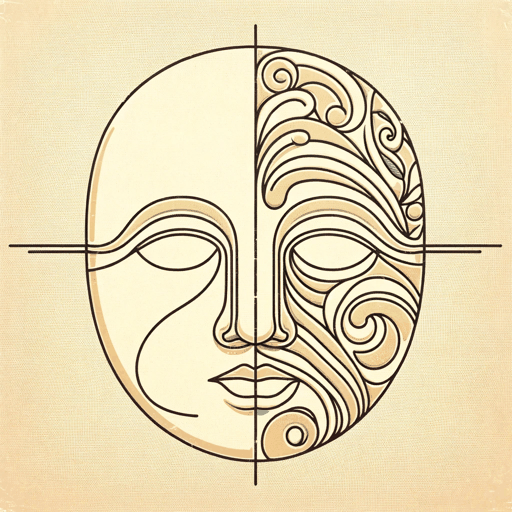35 pages • 1 hour read
Ruth BenedictPatterns of Culture
Nonfiction | Book | Adult | Published in 1934A modern alternative to SparkNotes and CliffsNotes, SuperSummary offers high-quality Study Guides with detailed chapter summaries and analysis of major themes, characters, and more.
Summary and Study Guide
Overview
Patterns of Culture, originally published in 1934, is an anthropological text by Ruth Benedict. Translated into 14 languages and with three updated English editions, the book is considered a classic in American anthropology. This study guide uses the most recent, 2005 edition published by Mariner Books, which includes a foreword by Louise Lamphere, a preface by Margaret Mead, and an introduction by Franz Boas, the founding father of cultural anthropology.
Benedict popularized the idea of cultural relativism—that we should not judge other cultures by our standards but view them on their own terms. Just as significantly, she helped establish the “Culture and Personality” school of anthropological thought, which was a dominant academic paradigm in the United States until World War II and defined the field of psychological anthropology as we know it today.
Patterns of Culture set the groundwork for thinking about the relationship between culture and personality. Following in the tradition of Franz Boas, Benedict treats culture as a mental phenomenon that is learned, integrated, and shared. She takes Boas’s approach a step further, however, asking what brings coherence to a culture. Influenced by psychological theory, Benedict proposes that each culture has a “personality type” or worldview that patterns the attitudes and behaviors of individuals. She refers to this patterning as the gestalt or configuration of a culture.
The structure of the book has three foci. The first three chapters explain the premise of cultural anthropology and delve into definitions and case examples of what constitutes culture. Benedict argues against the idea that culture is based in biology. Rather, she argues, mental processes are a product of culture—a position that was forward thinking for its time, as the belief in the superiority of Western civilization prevailed in the mid-20th century as did the spread of scientific racism and Nazi sentiments.
The second focus spans three chapters, each one dedicated to an in-depth case study of a particular culture: the Zuñi of New Mexico, the Dobuans of Papua New Guinea, and the Kwakiutl of Vancouver Island. Inspired by Nietzsche’s writings on Greek tragedy, Benedict describes two dominant personality types: Apollonian, which emphasizes order, seriousness, and restraint; and Dionysian, which emphasizes joy, wildness, excess, and pleasure-seeking. The Zuñi are Apollonian, and the Kwakiutl are Dionysian. The Dobuans exhibit the restraint of an Apollonian worldview but the mania of a Dionysian. These three case studies reflect extreme personality types and are not intended to serve as a typology for all societies. Rather, as Margaret Mead writes in the preface to the book, they are examples of how Benedict views cultures as “personality writ large” (xiii).
The final two chapters include an impassioned argument for social justice and place Benedict as a forebearer of feminist anthropology. In these chapters, she examines the ideas of deviance and abnormality as they relate to society, asking the question: What does a society do with individuals who do not conform to mainstream norms? She notes that a characteristic that is abnormal in one society might be accepted or even praised in another. Homosexuality, for example, is seen as abnormal in Western society but not in many Native American societies. In her concluding remarks, Benedict chastises Americans for cultural intolerance and blames a rigid, hyper-conformist society lacking in empathy for creating psychopaths who are unable to find a sense of belonging. She argues that cultural relativity is needed to challenge paradigms and thus arrive at a more tolerant, inclusive, and self-aware existence.
Scholars generally agree that Benedict was a woman before her time, politically and professionally. Deeply critical of ethnocentric perspectives, Benedict calls for a comparative and informed understanding of all cultures and peoples. Patterns of Culture also lays the groundwork for current methods of anthropological investigation and interpretation. As Louise Lamphere writes in the forward, this current approach includes a deep understanding of the “symbolic, metaphorical, and semiotic aspects of culture” (ix), something Benedict details in her comprehensive study of customs, traditions, and ceremonies. Finally, Benedict’s sustained attention to cultural relativism has been adopted in many fields, from multicultural studies to more applied fields, like education and health, that seek to connect with and be sensitive to the needs of all segments of a population.

